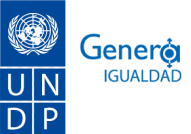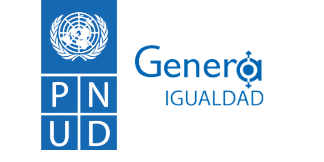Climate talks finished last week in Katowice, Poland during the COP24, with an alarming announcement about the speed at which climate change is advancing calling it a “matter of life and death” for countries and their people. Over the past four years, we’ve had the highest temperatures in human history, almost 1°C higher than at the beginning of the industrial revolution.
Foto por: UNDP / Freya Morales
Climate talks finished last week in Katowice, Poland during the COP24, with an alarming announcement about the speed at which climate change is advancing calling it a “matter of life and death” for countries and their people. Over the past four years, we’ve had the highest temperatures in human history, almost 1°C higher than at the beginning of the industrial revolution1.
The concentration of carbon dioxide has also made records, having reached its highest levels in the last 3 million years. And if we maintain the current Nationally Determined Contributions, which are the emissions goals defined by countries under the Paris Agreement, we would reach a temperature 3°C higher by 20302.Polar caps continue to melt, coral reefs are bleaching and dying, ocean levels continue to rise, and air pollution affects the health and quality of life of urban residents. A growing number of places in the world are experiencing water scarcity and decreases in crop yields, while natural disasters are growing in number, intensity and damage caused, especially hurricanes, earthquakes and landslides.
It may seem that such issues remain strictly environmental concerns, far from the realities of both individuals and companies, but underneath it all is the latent reality that they are linked to the practice of accumulation, inequality and carbon-based economic development models, carbon being one of the most highly polluting agents on the planet.
This is a model in which the richest 1% of the population appropriates 33% of the world’s wealth3. One in which approximately half of women in working age is left out of the labour market, and 122 young women for every 100 young men live in poverty. Meanwhile, less than 5% of board members for the largest companies in the world are women4, and for every dollar that men earn on average, women earn about 80 cents5.
A model in which, while the effects of climate change are detrimental to all humanity, they are more so for women, and it is even worse for rural and indigenous women. At the same time, it is estimated that roughly a quarter of the economically active women in the world work in agriculture6, meaning that the reductions in crop yields linked to climate change will have a particularly devastating effect on the livelihoods of millions of them, as well as unequal effects on their families’ health and nutrition as the prices of commodities increase. In some regions it is estimated that reductions in productivity could reach 15% in rice, 50% in wheat and 10% in corn7.
In the current model, only 13% of landowners are women8. The rural population in general has limited access to credit, supplies, fertilizers, technology, information and markets for agricultural activities, and it is even worse for rural women.
Moreover, about 65% of households in the world depend on solid fuels to meet their energy demands9, and these are households whose care falls almost exclusively on the shoulders of women, who devote two to three times more time to it than men10.
A digitally-based economy is around the corner, and major gaps remain open. Less than a third of R&D teams’ staff is female11, and only about a third of women are considering careers in technology compared to more than half of men12.
In our current economic development model, companies have a tremendous responsibility and urgent need to find responsible modes of production. This not only applies to the way they meet their energy demands, for example, using renewable and ecologically sustainable sources, but to how they supply their value chains, how they manufacture their products and how they handle their waste. It is estimated that as of 2015 nearly 6.3 billion metric tons of plastic waste have been produced, and if the current rate is maintained we will reach 12 billion metric tons of waste by 205013. Consider the following facts, we purchase about 1 million plastic bottles per minute, less than 50% of which is recycled and only 7% of which is turned into new bottles14.
The 2030 Agenda, the compass that guides the destiny of humanity, aims to have a world without poverty and hunger and with quality education as well as access to affordable, clean energy sources. Its aim is also for the world to have an inclusive economic growth supported by models of sustainable industrialization, responsible production and consumption and cities that are sustainable, safe and resilient. However, it seems such goals cannot be achieved if they are not built on new development models that break with the fundamental premises of the one we have now, especially those related to gender inequality and the causes of climate change, as well as the connections between them.
Not all companies see the societies around them as just another factor of production. In fact in many cases the issue is managed based on corporate social responsibility (CSR) plans that tend to be too short-sighted. It is not enough for companies to be responsible for their employees, shareholders and stakeholders, they just cannot thrive when the world around them is worsening. The limited discourse of CSR has given way to the integration of the concept of sustainability, aligning business strategy with the global development agenda and the development objectives of the communities where they operate. Simply put, this has become a matter of not just economic intelligence; it is also one of survival.
Companies need prosperous societies if they are to thrive. Not only because they need markets where people can purchase their products and services; secure the licenses they need to operate; and make their investments less risky. But also, because they will only be able to flourish, or at least maintain their operations in the long term, if they generate real opportunities for progress for the people they employ as well as collective wealth in the communities where they operate.
What can businesses do to align its business strategies with Sustainable Development Goals and stop overlooking?
First, ensure that the vision of corporate sustainability, linked to the development objectives of the societies where they operate, is part of its corporate DNA. Not doing so will make alignment extremely difficult. There must be a commitment at the highest level, so it can permeate the entire organization.
Second, a company can assess its level of alignment with the Sustainable Development Goals (SDGs), determining its core business contributions, philanthropic initiatives and other social responsible strategies not directly linked to it. It can measure the status of its internal gaps with the SDGs, for example, gender and wage gaps as well as gaps in male versus female absenteeism or participation in leadership positions and boards of directors. It can also measure its carbon footprint, water consumption in its value chain and energy consumption against the SDGs.
One tool the UNDP has developed for such assessments is the Equality@Work online platform, a technological solution for measuring gender gaps in companies.
Third, start at home. Make internal organizational changes that will ensure management practices favour equal opportunities, are not discriminatory, transform the company’s cultural norms and compensate those who are disadvantaged, all while at the same time incorporating sustainability goals into the
corporate core growth strategy, along the value chain.
The Gender Equality Seals are an effective way to achieve these changes. They are certification programmes promoted by UNDP to help generate clear business strategies that support gender equality. Companies can also join programmes like the Green Commodities Programme, which helps to achieve a sustainable agricultural and marine commodity production.
Fourth, make the sustainable development agenda a market opportunity. It is estimated that achieving the SDGs could open up 60 market “hot spots” that could add approximately US$12 trillion to the global economy and create more than 380 million new jobs15. Opportunities abound in value chain waste reduction, circular economy models for electronics, food production in low-income sectors, remote health care, sustainable housing and much more.
For companies seeking to include low-income populations in their value chains, UNDP has developed the Business Call to Action platform for the development of inclusive businesses and the construction of a support ecosystem to help them flourish. For companies and investors wishing to align themselves with SDG standards and principles and gain access to market intelligence they can use to inform investment decisions and a pipeline of concrete investment opportunities linked to the SDGs, UNDP recently launched the SDG Impact initiative.
Finally, companies can build partnerships with development partners and knowledge networks that support business efforts on the path to sustainability and equality. They can join platforms that facilitate such connections and the exchange of information, resources and experience. To this end, UNDP will soon launch the SDG Platforms and SDG Labs, which will allow alliances to be leveraged between public and private sectors and facilitate the co-creation of knowledge, technology and innovation.
[1] World Metereological Organization (2018).
[2] UN Environment Programme Emissions Gap Report (2018).
[3] World Inequality Lab, “Informe sobre la desigualdad global”, 2018.
[4] Catalyst, Women in S&P 500 Companies, 2018.
[5] ILO, Global Wage Report 2018/19: what lies behind gender pay gaps.
[6] ILO, Databank on gender statistics, 2015.
[7] Citado por UN Women, Turning promises into action: gender equality in the 2030 Agenda for Sustainable Development (2018).
[8] UN Women, Turning promises into action: gender equality in the 2030 Agenda for Sustainable Development (2018).
[9] Ibíd.
[10] Ibíd.
[11] Ibíd.
[12] PwC, Women in tech: time to close the gender gap, 2017.
[13] UN Environment Programme, 2017.
[14] Euromonitor International, 2017.
[15] Business & Sustainable Development Commission, 2017.

